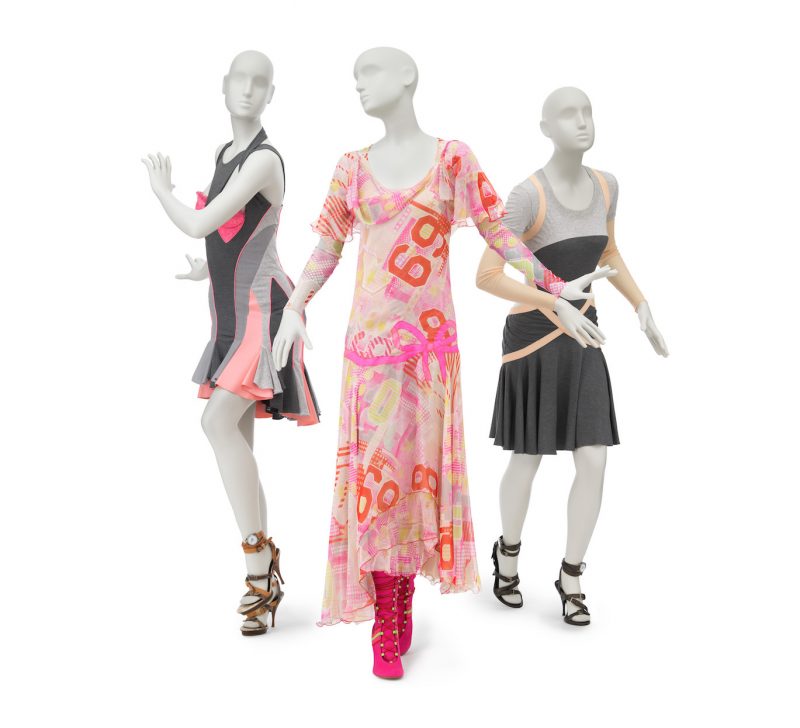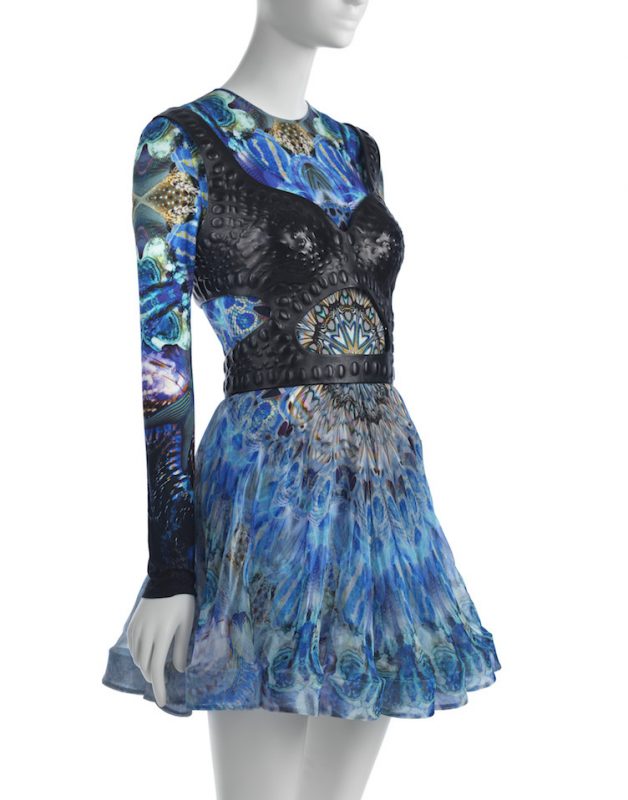An Alexander McQueen Exhibition Has Come To LACMA. Why This Should Be On Your “Must” List.

Photo Credit: © Museum Associates/LACMA
There’s a new exhibition on at LACMA, and it’s one that every fashion aficionado will appreciate. Lee Alexander McQueen: Mind, Mythos, Muse, contextualizes the work of Lee Alexander McQueen (England, 1969–2010) within art history and examines the interdisciplinary impulse that defined the designer’s career. The first McQueen exhibition on the West Coast of the United States, Mind, Mythos, Muse interprets the designer’s work through the lens of inspiration, juxtaposing his designs with non-fashion artworks by makers who drew upon analogous themes and visual references. Exploring imagination, artistic process, and innovation in fashion and art, the exhibition presents a case study of McQueen’s methods and influences, providing the opportunity to better understand artistic legacy and the cyclical nature of inspiration.

Photo Credit: © Museum Associates/LACMA
Comprising nearly 200 objects, Lee Alexander McQueen: Mind, Mythos, Muse places over 70 designs by McQueen in conversation with examples of costume and textiles, decorative arts, paintings, sculptures, prints, and photographs by 35 other artists—primarily drawn from LACMA’s permanent collection. The exhibition also highlights a substantial gift from Los Angeles–based collector Regina J. Drucker that has greatly enhanced LACMA’s collection of works by McQueen, which is the largest held by a public institution in North America.

Photo Credit: Museum Associates/LACMA
One of the most significant contributors to fashion between 1990 and 2010, McQueen was both a conceptual and technical virtuoso. His critically acclaimed collections synthesized the designer’s proficiency in tailoring and dressmaking with both encyclopedic and autobiographical references that spanned time, geography, media, and technology. The delicate ruff and gold beading around the neck and front of a dress from McQueen’s “Widows of Culloden” collection (Fall/Winter 2006–07), for example, echos the lace collar and scrolling metallic-thread embroidery in Frans Pourbus II’s Portrait of Louis XIII, King of France as a Boy (c. 1616). Similarly, McQueen drew upon the Spanish bullfight, flamenco, and the work of Francisco de Goya in “The Dance of the Twisted Bull” (Spring/Summer 2002), which portrayed bullfighting as a metaphor for life and death. McQueen’s interpretation of the distinctive kati rimo (brocade pattern) design, seen painted on a 17th-century Tibetan trunk, is incorporated into pieces from his collection “Scanners” (Fall/Winter 2003–04), which illustrated an eastward migration across Siberia through Tibet and to Japan. Contemporary works include a 2010 monumental photograph of the ocean by Andreas Gursky paired with looks from McQueen’s collection “Plato’s Atlantis” (Spring/Summer 2010), which explored rising sea levels.

Photo Credit: © Museum Associates/LACMA
The exhibition is organized into four thematic sections: Mythos, Fashioned Narratives, Technique and Innovation, and Evolution and Existence.
Mythos explores select McQueen collections inspired by mythological and religious belief systems, incorporating visual references to diverse cultures as well as art historical movements. While these collections put McQueen’s impressive breadth of artistic source material on display, they also highlight a practice of external inspiration-seeking that characterized fashion design during his career. Untitled (Angels and Demons) (Fall/Winter 2010) references Christian iconography from art of the Northern and Italian Renaissance. Neptune (Spring/Summer 2006) looked to ancient Greece and Rome, while Eye (Spring/Summer 2000) combines Western fashion with interpretations of dress traditionally associated with the former Ottoman Empire. McQueen’s irreverent fusion of religious symbols and silhouettes, historical secular dress, and contemporary fashion conflates costume traditions found across disparate cultures into his singular vision.
The second section, Fashioned Narratives, considers McQueen’s penchant for worldbuilding, highlighting collections that tell original stories or reimagine past events. Scanners (Fall/Winter 2003–04) portrays a journey across Siberia, through Tibet, to Japan, with designs that borrow from the regions’ textile and dress traditions. The Girl Who Lived in the Tree (Fall/Winter 2008–09) envisions a fairytale that draws on 19th- and mid-20th- century English fashion and India’s rich textile traditions. In Memory of Elizabeth How, Salem, 1692 (Fall/Winter 2007–08) traced McQueen’s familial background to colonial Massachusetts to pay tribute to distant ancestors executed in the Salem witch trials. The Widows of Culloden (Fall/Winter 2006–07) mines McQueen’s Scottish ancestry, condemning British colonialism and violence in Scotland, especially during the 1746 Battle of Culloden. Rooted in McQueen’s personal history and romanticized historical references, these narrative collections explore themes of tradition, discovery, exchange, power, persecution, violence, and metamorphosis.
Evolution and Existence examines McQueen’s fascination with life cycles and the human condition. The designer’s considerations of nature, evolution, and death resulted in collections that explored life’s inherent fragility—and found hope in its regeneration. The Horn of Plenty (Fall/Winter 2009–10) critiqued mass consumerism, which McQueen countered by recycling famous silhouettes from himself and haute couturiers before him. The Dance of the Twisted Bull (Spring/Summer 2002) portrayed bullfighting as a metaphor for life and death, while Deliverance (Spring/Summer 2004) presented an allegorical “dance to the death” inspired by the film They Shoot Horses, Don’t They?. Citing Stanley Kubrick’s Barry Lyndon, mourning, and Dutch floral still lifes, Sarabande (Spring/Summer 2007) finds beauty in the inevitability of decay. The designer’s final completed collection, Plato’s Atlantis (Spring/Summer 2010), imagines a world consumed by the ocean, the place where life originated—and, McQueen suggested, would continue.
Technique and Innovation demonstrates McQueen’s masterful abilities in garment construction. His collections consistently drew upon formative years spent apprenticing as a tailor on Savile Row. In his dressmaking, complex garment patterns emerge, informed by skillful cutting abilities and a tactile sensitivity in draping. Mixing form with function and history with innovation, McQueen regularly drew upon Western costume history, refashioning men’s and women’s dress, textiles, and embellishments from eras ranging from the Renaissance and the Enlightenment to the Belle Époque and the Jazz Age. This thoughtful attention to detail was also applied to the designer’s inventive fabrics and surface treatments. McQueen incorporated emerging technologies such as laser-cutting and digital printing that have had a lasting impact on the fashion industry.













